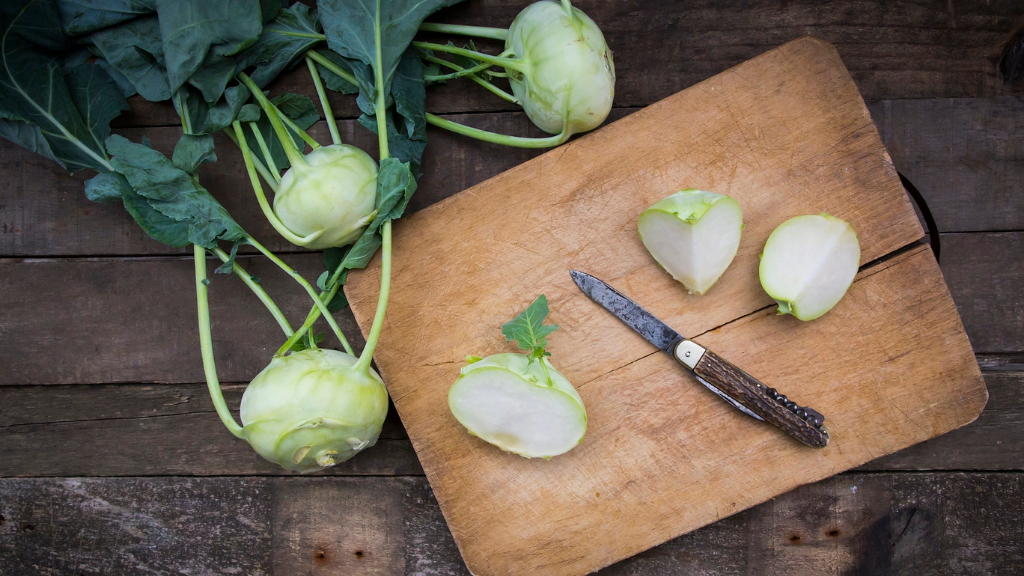Weird Vegetable Growing: Top 10 Unusual Vegetables To Grow

The USDA recommends we eat 5-9 servings of fruits and vegetables a day. This might seem like a lot, especially if your veggie repertoire only consists of carrots and celery.
The thing is there are tons of unusual types of vegetables out there that might pique your interest and get you excited about not only ingesting them but growing these veggies.
Unusual Types of Vegetables to Grow
What are some unusual vegetables to grow? Well, I suppose some of them depend on a person's definition of 'unusual,' but here are my top 10 picks for weird vegetable growing:
- Yardlong beans - Green beans are a staple of the American diet, but what about Chinese yardlongs? To many of us these near 2-foot long beans seem otherworldly. Pick them when they are about a foot long, though, and cook them just as you would a regular green bean. They are pretty entertaining to use on a crudités (assorted vegetable) platter too.
- Winter radishes - Speaking of crudités, radishes feature prominently on many a veggie platter, but kick it up a notch and try growing some winter radishes. Winter radishes include the mild, white daikon giants, the jet black radish varieties, and even a watermelon hued radish.
- Fiddleheads - I'm sure you have seen this weird vegetable growing in the woods. Fiddleheads not only have a great name, but look as intriguing as the name suggests. Fiddleheads are the curled-up fronds from young ferns like ostrich fern or vegetable fern. They need to be cooked prior to eating and taste much like asparagus.
- Kohlrabi - Kohlrabi is an old-fashioned veggie that my grandmother grew. The edible part of the plant looks like a bulb but is actually the swollen stem. We used to eat it sliced raw with salt on it, but a more modern twist is to slice it lengthwise into long, thin rectangles and then bake for a healthy French fry substitute.
- Salsify - Salsify is a truly weird vegetable to be growing. For one thing, it looks like you are growing a stick. Unattractive it may be, but it is highly versatile and tastes much like an oyster when cooked!
- Celeriac - Another unusual and ugly vegetable to grow is celeriac, which is uncommon here but widely used in Europe. Celeriac is an amazing substitute for potatoes and can be cooked in the same way but lacks the high starch content of tubers.
- Sunchoke - Sunchokes are another versatile veggie that tastes quite a bit like an artichoke. They can be cooked or eaten raw but you do want to be careful when eating them, as they are notorious for causing bloating and gas, hence their nickname 'fartichoke.' Grow this one just to get the kids giggling!
- Lotus root - Lotus root is about as weird looking as you can get. It is grown for the root, which is then cooked in a number of ways, most commonly stir fried.
- Kai lan - To go along with the stir-fried lotus root, try growing Kai lan, also known as Chinese kale or Chinese broccoli. Like lotus root, Kai lan can be cooked in a myriad of ways and can also be eaten raw.
- Kerala - Kerala, also known as bitter melon, is extremely popular in India where the entire plant is consumed. As the name suggests, this vegetable is, indeed, bitter with a texture like a cucumber and is usually pickled or stuffed when eaten.
These unusual vegetables to grow only touch the tip of the iceberg. There are so many other weird and wonderful veggies out there to try.
Soon enough you'll find consuming 10 servings a day to be a snap.
Gardening tips, videos, info and more delivered right to your inbox!
Sign up for the Gardening Know How newsletter today and receive a free copy of our e-book "How to Grow Delicious Tomatoes".

Amy Grant has been gardening for 30 years and writing for 15. A professional chef and caterer, Amy's area of expertise is culinary gardening.
-
 10 Common Composting Problems That Can Spoil Your Garden Gold – Plus Easy Fixes
10 Common Composting Problems That Can Spoil Your Garden Gold – Plus Easy FixesLearn how to troubleshoot common composting issues before they ruin your stash – from bad smells and bugs to materials not breaking down as they should.
By Susan Albert
-
 Terrifically Tubular Flowers For Hummingbirds: 9 Tube-Flowered Plants To Attract Hummers
Terrifically Tubular Flowers For Hummingbirds: 9 Tube-Flowered Plants To Attract HummersGrowing tubular flowers for hummingbirds helps you create the optimum feeding conditions for your winged friends. Here are nine tubed delights for hummers
By Tonya Barnett